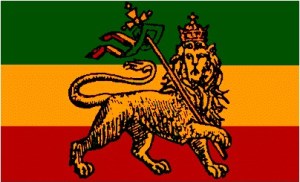Mento music is a little known style of folk music and dance native to the island of Jamaica that saw its commercial peak in the 1950s. Sometimes called Jamaican Calypso, it is closely related to that Trinidadian musical form.
Mento bands usually consist of small groups of musicians. Acoustic guitar, fifes, maracas, and the rumba box are all typical elements in the musical production. Banjo however, seems to be central in traditional Mento. Particularly rural groups often featured hand-made instruments such as the bamboo clarinet and saxophone.
A unique style of music, mento is the lineal forebear of reggae, and like blues it is a blend of European folk musics, especially of the British Isles and Spanish influence along with many elements of traditional West African music. For reasons that are more intricate than this blog-post is prepared to delve into, Trinidadian Calypso was more marketable than Jamaican Mento, and by the middle of the 20th century it had become the music of the Caribbean.
After Calypso lost its commercial appeal record companies decided to make jazz the new music of the Caribbean and began importing jazz musicians into the islands. Jazz didn’t take root like they had hoped but this injection of fresh blood mixed with the rootsy sound of the Jamaican shanty towns and the new sounds coming from the United States over short-wave radio resulted in the creation of Ska.
Ska was an upbeat dancehall style of music comparable to America’s old rock and roll, recognizable for the guitar skank rhythm style. With the heavy injection of ganja culture, ska superstars such as the Wailers began slowing down their tempos creating the short-lived style rocksteady – best thought of as what I think it really is: a small bridge between ska and reggae.
Reggae emerges with the dominance of Rastafarian philosophy in the previous style, with typically even slower, more intricate rhythms, lyrics with deep spiritual and socio-political messages. Bob Marley, Peter Tosh, and Toots and the Maytals all played defining moments in ska, rocksteady, and reggae, but none of them would have been as significant without Mento.
Below is my cover of “Miss Constance,” a traditional Mento tune available for download here.










 The Dog’s D’Amour, Errol Flynn, 1989
The Dog’s D’Amour, Errol Flynn, 1989


